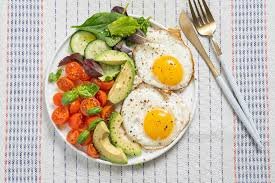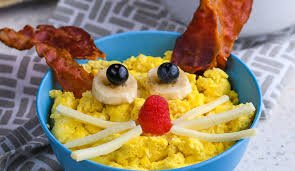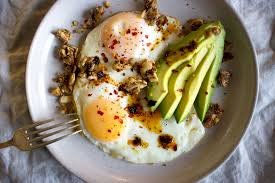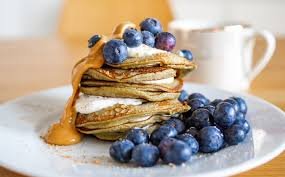Breakfast is far more than just your first meal of the day – it’s the nutritional foundation that sets the biochemical tone for everything that follows. When you incorporate adequate, high-quality protein into your morning routine, you’re not simply eating; you’re strategically programming your body and mind for optimal performance. The science is clear: protein-rich breakfasts trigger a cascade of physiological benefits that carbohydrates alone simply cannot match. At the cellular level, the amino acids from dietary protein serve as essential building blocks for neurotransmitters that regulate focus and alertness.
Unlike the fleeting energy surge from carbohydrate-heavy breakfasts that often leads to mid-morning crashes, protein provides sustained satiety by slowing gastric emptying and modulating hunger hormones like ghrelin. This metabolic advantage translates directly to improved cognitive performance, better appetite control throughout the day, and enhanced metabolic flexibility.
Yet despite these well-documented benefits, modern breakfast habits frequently fall into what nutrition scientists call “the protein gap.” Across continents and cultures, morning meals have become dominated by processed cereals, refined grains, and sugary options that may provide immediate energy but fail to deliver the protein needed for lasting satiety and metabolic health.
This nutritional imbalance contributes to the mid-morning energy slumps, cravings, and decreased productivity that plague so many people’s daily routines. Your journey to better mornings – and consequently, better days – begins here. Let’s explore how strategic protein choices at breakfast can transform not just your meal, but your entire relationship with food, energy, and daily performance. The first and most important decision of your day is what you choose to break your fast – make it count.

Benefits of Eating Breakfast Recipes High In Protein
In today’s health-conscious world, the importance of choosing the right foods for the first meal of the day cannot be overemphasised. Breakfast Recipes High In Protein have emerged as a powerful way to kickstart metabolism, support muscle development, and enhance overall wellness. Individuals who begin their day with Breakfast Recipes High In Protein often report sustained energy levels, reduced cravings, and improved focus.
These positive effects are not just hearsay; they are supported by nutritionists and dieticians who advocate for protein-rich diets, especially during the most crucial meal of the day—breakfast. One of the core benefits of Breakfast Recipes High In Protein is their ability to keep you feeling full for longer periods.
When you consume Breakfast Recipes High In Protein, you give your body the essential macronutrients it needs to function efficiently throughout the day. This means you are less likely to snack on sugary or carbohydrate-heavy options later in the morning. The result is better control of your daily caloric intake, which in turn can aid in weight management. Because of this satiety factor, Breakfast Recipes High In Protein are highly recommended for people looking to maintain a healthy weight or pursue a weight loss journey.
Another compelling reason to choose Breakfast Recipes High In Protein is their impact on hormone regulation. When you start your day with Breakfast Recipes High In Protein, you help control the hormones that influence hunger, satiety, and metabolism.
This includes lowering levels of ghrelin (the hunger hormone) while increasing levels of peptide YY and GLP-1, hormones that make you feel full. By balancing these hormones, Breakfast Recipes High In Protein contribute to better appetite control and long-term weight management. If you have dietary restrictions or specific health concerns, you can still enjoy Breakfast Recipes High In Protein tailored to your needs.
For instance, plant-based Breakfast Recipes High In Protein can include tofu scrambles, quinoa bowls, or nut butter smoothies. These are excellent alternatives for vegetarians and vegans. On the other hand, individuals avoiding dairy or gluten can opt for Breakfast Recipes High In Protein made with lean meats, eggs, and gluten-free grains. This adaptability makes Breakfast Recipes High In Protein accessible to almost everyone.
High-Protein Breakfast Recipes
Egg-Based Recipes
Eggs are one of the most versatile and protein-rich breakfast foods, offering about 6 grams of protein per large egg.
Fluffy Scrambled Eggs with Cottage Cheese
For an extra protein boost, whisk 2-3 eggs with ¼ cup of cottage cheese before scrambling. The cottage cheese melts into the eggs, making them creamier while adding nearly 7 grams of protein. Serve with whole-grain toast and avocado for a balanced meal.

Spinach & Feta Egg Muffins
Perfect for meal prep, these egg muffins combine beaten eggs with spinach, feta cheese, and diced bell peppers. Bake in a muffin tin at 350°F (175°C) for 20 minutes. Each muffin provides around 10 grams of protein, and they stay fresh in the fridge for up to four days.
Protein-Packed Breakfast Burrito
Scramble eggs with black beans, turkey sausage, and a sprinkle of cheese. Wrap in a whole-wheat tortilla and add a dollop of Greek yogurt instead of sour cream for extra protein. One burrito can easily pack 25-30 grams of protein.
Greek Yogurt & Dairy Options
Greek yogurt is a breakfast superstar, offering nearly twice the protein of regular yogurt.
Greek Yogurt Parfait with Granola & Nuts
Layer Greek yogurt with berries, a drizzle of honey, and a handful of granola and almonds. Opt for plain, unsweetened yogurt to avoid added sugars. A single cup of Greek yogurt provides about 20 grams of protein.
Cottage Cheese Bowl with Honey & Almonds
Cottage cheese is an underrated high-protein option (14 grams per ½ cup). Top it with fresh fruit, nuts, and a touch of honey for a sweet and savory breakfast. For a savory twist, try adding cherry tomatoes, cucumber, and black pepper.
High-Protein Smoothie Bowl
Blend Greek yogurt, a scoop of protein powder, frozen berries, and a splash of almond milk. Pour into a bowl and top with chia seeds, granola, and nut butter. This bowl can easily exceed 30 grams of protein.
Plant-Based Protein Breakfasts
For those avoiding animal products, plant-based proteins like tofu, lentils, and chia seeds can provide a solid protein foundation.
Tofu Scramble with Turmeric & Veggies
Crumble firm tofu and sauté with turmeric (for an egg-like color), spinach, onions, and bell peppers. Tofu contains about 10 grams of protein per ½ cup, making this a hearty vegan alternative to scrambled eggs.
Chia Pudding with Pea Protein
Mix chia seeds with almond milk and a scoop of plant-based protein powder. Let it sit overnight, then top with fresh fruit and nuts. Chia seeds add fiber and omega-3s, while protein powder boosts the protein content to 15-20 grams per serving.
Lentil & Sweet Potato Breakfast Hash
Cooked lentils (18g protein per cup) pair well with roasted sweet potatoes, onions, and spices for a savory, fiber-rich breakfast. Top with avocado for healthy fats.
Meat & Seafood High-Protein Meals
For those who enjoy animal proteins, these breakfasts deliver a powerful protein punch.
Smoked Salmon & Avocado Toast
Top whole-grain toast with smashed avocado and smoked salmon (20g protein per 3 oz). Add capers, red onion, and a squeeze of lemon for extra flavor.
Turkey Sausage & Egg Skillet
Sauté lean turkey sausage with scrambled eggs, spinach, and mushrooms. This skillet meal cooks in 15 minutes and provides 30+ grams of protein.
Shakshuka with Chickpeas
This Middle Eastern dish features eggs poached in a spiced tomato sauce. Adding chickpeas increases the protein content while keeping it hearty and flavorful.
Oats & Grain-Based High-Protein Meals
Even carb-heavy breakfasts can be protein-rich with the right tweaks.
Protein Overnight Oats
Mix rolled oats with Greek yogurt, protein powder, and almond milk. Let it sit overnight, then top with nuts and berries in the morning. One serving can reach 20+ grams of protein.
Quinoa Breakfast Bowl
Cook quinoa in milk (dairy or plant-based) and top with nuts, seeds, and fruit. Quinoa is a complete protein, meaning it contains all nine essential amino acids.
Peanut Butter Banana Protein Pancakes
Blend oats, banana, eggs, and peanut butter for flourless, high-protein pancakes. Top with Greek yogurt and a drizzle of maple syrup.

Meal Prep & Time-Saving Tips
- Batch Cooking: Make egg muffins, breakfast burritos, or chia pudding in bulk.
- Freezer-Friendly Options: Burritos and pancakes freeze well for quick reheating.
- 5-Minute Breakfasts: Greek yogurt with nuts, protein smoothies, or cottage cheese with fruit.
- Protein Boosters: Keep protein powder, nut butter, and hard-boiled eggs on hand.
Nutritional Considerations
- Complete vs. Incomplete Proteins: Animal products and quinoa provide all essential amino acids, while plant-based eaters should combine foods (e.g., beans + rice).
- Balancing Macros: Pair protein with healthy fats (avocado, nuts) and fiber (veggies, whole grains).
- Weight Loss vs. Muscle Gain: Higher protein (30 g+) helps muscle recovery, while moderate protein (20-25g) aids satiety for weight loss.

Conclusion
A high-protein breakfast is far from the restrictive, monotonous meal many imagine—it can be a vibrant, flavorful experience that nourishes both body and mind. The recipes we’ve shared showcase how simple, wholesome ingredients can be transformed into satisfying morning meals that fuel your day without sacrificing taste or convenience. From fluffy scrambled eggs with cottage cheese to creamy chia pudding packed with plant-based protein, these dishes prove that eating for sustained energy doesn’t mean compromising on enjoyment.
Whether you’re an athlete seeking muscle recovery, a busy professional needing mental clarity, or simply someone looking to break free from mid-morning slumps, these protein-rich options adapt to your lifestyle while delivering the nutrients your body craves. The journey to better mornings starts with just one recipe—will it be the savory satisfaction of a breakfast burrito, the refreshing simplicity of a Greek yogurt parfait, or perhaps the hearty comfort of protein oats? Each option offers its unique benefits, but they all share the power to transform your morning routine.
We encourage you to experiment with these ideas, tailor them to your tastes, and discover how small changes can yield big differences in your energy and productivity. Share your experiences—which recipes worked best for you? What creative twists did you add? Your insights could inspire others to re-imagine their breakfasts, too. Here’s to mornings that don’t just fill you up, but truly fuel you up for whatever the day may bring.
Frequently Asked Questions
1. Can I get enough protein without eating meat?
Absolutely! Numerous excellent plant-based protein sources can help you meet your daily protein requirements:
- Legumes: Lentils (18g per cup), chickpeas (15g per cup), black beans (15g per cup)
- Whole grains: Quinoa (8g per cup), oats (6g per ½ cup)
- Nuts and seeds: Almonds (6g per ounce), chia seeds (4g per tbsp)
- Dairy alternatives: Greek yogurt (17g per 6oz), cottage cheese (14g per ½ cup)
- Soy products: Tofu (10g per ½ cup), tempeh (15g per ½ cup)
For optimal nutrition, combine complementary proteins throughout the day, such as:
• Rice + beans
• Whole wheat bread + peanut butter
• Hummus + pita
2. Are protein powders necessary for a high-protein breakfast?
While not essential, protein powders can be beneficial in certain situations:
- When you’re short on time and need quick nutrition
- For athletes with higher protein requirements
- When recovering from illness or injury
- For people with small appetites in the morning
Best practices for protein powder use:
• Choose high-quality options like whey, casein, or plant-based blends
• Stick to 1-2 scoops (20-40g protein) per serving
• Use them to supplement whole food proteins, not replace them
• Be mindful of added sugars in flavoured varieties
3. What are the best high-protein vegan breakfast options?
Here are three complete vegan breakfast meals with 20+ grams of protein:
Option 1: Tofu Scramble Power Bowl
- ½ block firm tofu (20g protein)
- 1 tbsp nutritional yeast
- ¼ cup black beans
- 1 slice whole grain toast
- Sautéed spinach and mushrooms
Option 2: Chia Protein Pudding
- 3 tbsp chia seeds (6g protein)
- 1 scoop plant protein powder (20g)
- 1 cup almond milk
- 2 tbsp almond butter (7g)
- Topped with pumpkin seeds
Option 3: Lentil Breakfast Hash
- 1 cup cooked lentils (18g)
- ½ cup quinoa (4g)
- Roasted sweet potatoes
- Sautéed kale
- Tahini dressing
4. How much protein can my body use from one meal?
The body’s protein utilization depends on several factors:
- Activity level: Athletes may utilize more post-workout
- Age: Older adults benefit from a more evenly distributed intake
- Body composition: Those with more muscle mass can utilize more
- Protein quality: Complete proteins are used more efficiently
General guidelines:
• 20-40g protein per meal is optimal for most adults
• The body can process up to 0.4g of protein per kg body weight per meal
• Excess protein is either excreted or used for energy
5. What are some signs I’m not getting enough protein at breakfast?
Watch for these common indicators:
- Feeling hungry within 2 hours of eating
- Mid-morning energy crashes
- Difficulty building or maintaining muscle
- Frequent cravings for sweets or carbs







